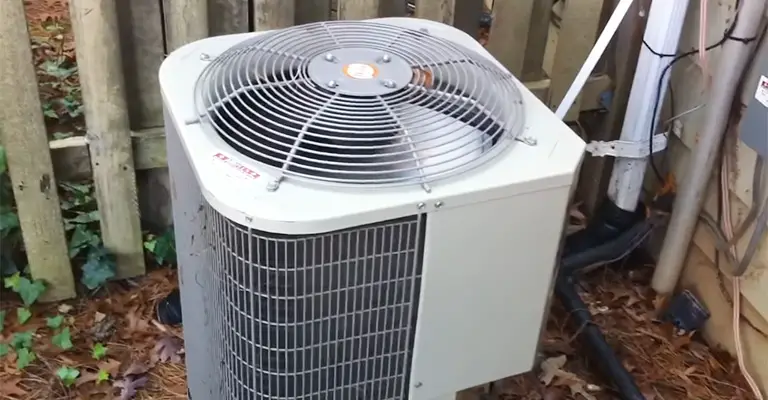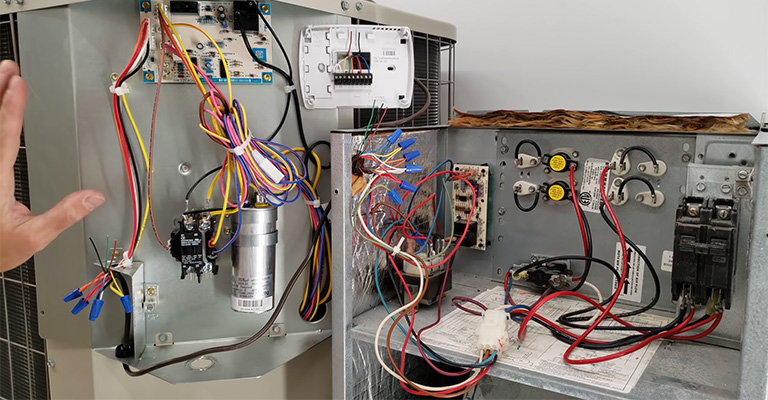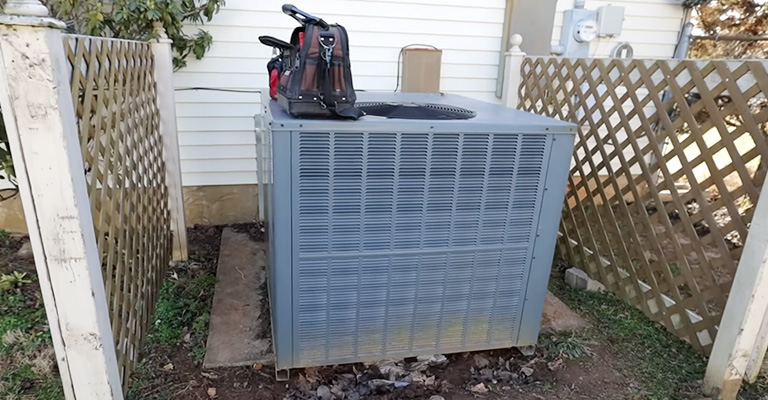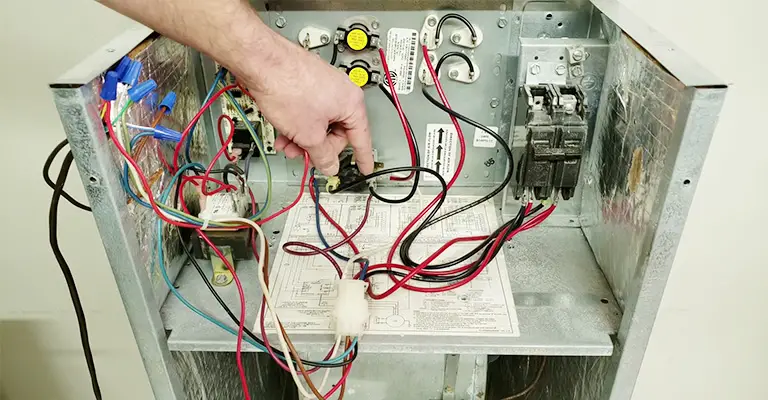Does your heat pump seem to have a mind of its own, cycling on and off frequently?
A heat pump that constantly turns on and off can be both frustrating and perplexing, leaving you wondering if there’s a problem with your heating and cooling system.
In your home, the thermostat regulates the temperature. Your heat pump may turn on and off frequently if it needs to be repaired.
If the thermostat is acting up, it could be an issue with the device or simply a low battery or incorrect settings.
A good place to start is checking the thermostat settings. Your heat pump may need to turn on and off frequently if the thermostat is set at a temperature that is significantly different from your home’s actual temperature.
In some cases, heat pumps are more prone to turning on and off frequently than other appliances.
Troubleshooting the issue and avoiding expensive repairs and replacements can be easier when you know why your heat pump repeatedly turns on and off.
Here Are The Main Reasons Your Heat Pump Keeps Turning On and Off

It will lead to a significantly increased energy bill and damage to your unit’s parts if it is constantly on and off. You’ll have to repair or replace the parts as a result. A phenomenon known as short cycling occurs when this occurs.
After all, no one likes short cycling. You may need help heating or cooling your home when your heat pump short cycles. Whenever the temperature is too high, the unit restarts multiple times.
We are going to explain why this might be happening, as well as what you can do about it.
1. Poor Insulation Or Sealing
Your heat pump could be cycling frequently if it is located inside an old, poorly insulated home.
In order to maintain a comfortable temperature, the heat pump must constantly work harder because cold air is seeping into the house from the outside.
In order to solve this problem, you can install thicker insulation around windows and doors, as well as seal any gaps that allow cold air to pass through. You may want to upgrade the insulation in other parts of your house as well.
In the summer, you can keep your home cool by adding attic insulation, while in the winter, you can keep it warm by adding wall insulation.
By doing so, your heating system will be less stressed and you will also be able to save money on energy costs.
2. Leaky Refrigerant
Refrigerants catch heat inside your home and transport it outside during warm weather. Your home receives heat from the outside when it’s cold, which is then compressed and pressed into your living space.
It will become difficult for your system to transfer heat if the refrigerant leaks. Thus, a cycle will not be able to be completed.
If you observe ice on your outdoor unit, it may indicate a refrigerant leak. Get in touch with a technician in this situation.
3. Thermostat Error

Inaccurate readings on your thermostat could be causing your heating system to overheat. Depending on where your thermostat is located, it might be causing this problem.
A misleading temperature scan is likely to occur in thermostats placed near a window or vent, resulting in a short cycling period.
There is also the possibility that your thermostat and heat pump are wired incorrectly. Regardless of the outcome, it’s best to consult with a professional.
4. Air Filter Clog
Always check your air filter when you have a problem with your heat pump. During the course of time, the filter collects dust and debris.
As a result, your home can’t get the proper amount of air circulated to heat or cool it when this is left unchanged.
It depends on whether it is reusable or disposable and whether you need to replace or clean your air filter. It is recommended to do this regularly, according to the manufacturer’s instructions, to prevent future clogs.
5. Oversized Unit

A replacement may be needed to address this problem. Professional installers do so to ensure correct calculations before any HVAC installation.
An oversized unit may heat or cool too quickly, detect that it’s reached the target temperature too soon, and then shut off without warning.
As the cycle continues, the process will be repeated. Having a trained technician perform Manual J testing in your home will ensure that your system is the right size.
How Do Heat Pumps Work?

As a heat source, a heat pump circulates a chemical substance called a refrigerant through an evaporation-condensation cycle. A compressor pumps the refrigerant between two coils in a heat exchanger.
As an evaporating substance soaks up the heat from its surroundings in one coil, it evaporates at low pressure. As the gas is transported to the other coil, it is compressed and becomes high-pressure gas.
In this stage, it releases the heat absorbed at the beginning of the cycle. Fully reversible heat pumps work on both cold and hot water.
You can use a heat pump to keep your living area comfortable throughout the year, heating during the cold, icy winter months and cooling and dehumidifying during the hot summer months.
Heat pumps can also operate in colder temperatures because air and ground outside are always warm, even on ice-cold winter days. A temperature of –0.4°F holds approximately 85 per cent of the heat of 69.8°F.
How to Maintain Your Heat Pump?
Maintenance is crucial to the efficient operation of heat pumps, just as it is for all other cooling and heating systems.
Professionally servicing your heat pump at least once a year will prevent mild to severe problems. As part of the technician’s duties, he will perform the following:
- Verifying that dirt and other obstructions have not accumulated in ducts, filters, blowers, and indoor coils.
- Sealing leaks in ductwork.
- Measurement of airflow to confirm sufficient flow.
- The lubricating and inspecting of motors and belts.
- Verifying the electrical control is functioning correctly.
- Using a measurement to verify the correct refrigerant charge.
- This and much more is included.
Final Words
It might be short cycling if your heat pump isn’t sending out heat or cool air in line with the thermostat setting.
To maintain good indoor air quality and optimal comfort all year long, it’s imperative you make sure your heat pump is working correctly.







